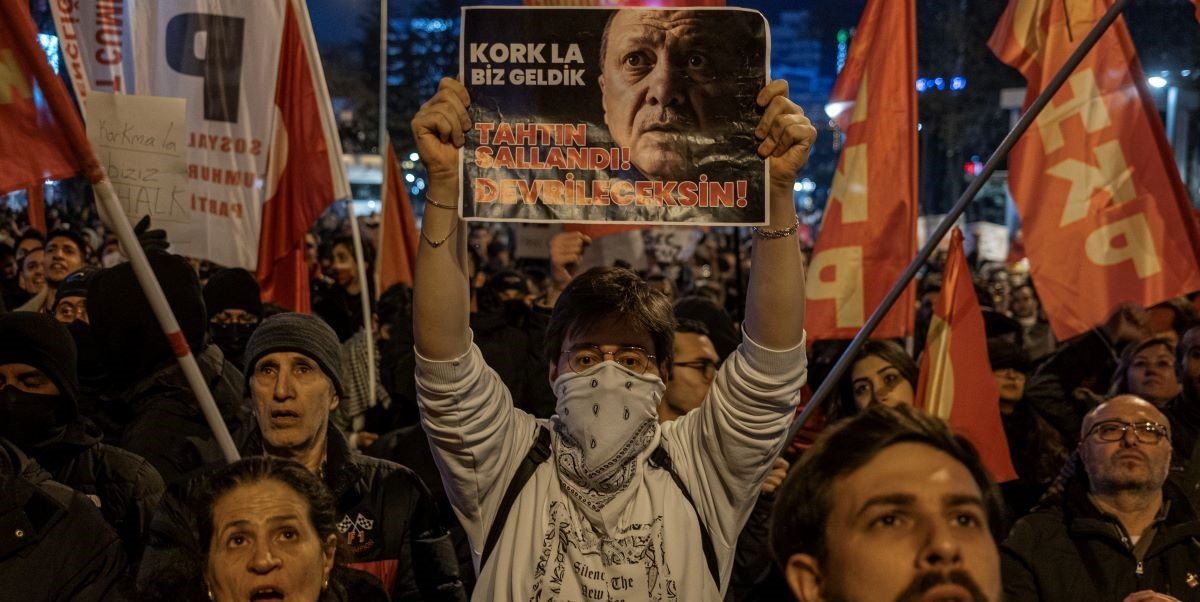A young protester is holding a banner with a photo of Turkey's President Recep Tayyip Erdogan during the demonstration. Protests in Ankara continue into their fifth day following the arrest of Istanbul Metropolitan Municipality Mayor, Ekrem Imamoglu.
Bilal Seckin / SOPA Images via Reuters Connect
When opposition leader Ekrem Imamoglu was first elected mayor of Istanbul in 2019, Turkey’s president, Recep Tayyip Erdogan, claimed his victory was a fraud and ordered a rerun. Imamoglu then won the do-over by a wider margin, and his party, Turkey’s main opposition, the CHP, has since won in nearly every major Turkish city.
Erdogan is now back foranother round of political hardball. Imamoglu was formally arrested on corruption allegations on Sunday. If convicted, he will not be allowed to run for president. Protests have erupted around the country.
The CHP, which claims the arrest is a politically motivated move to spare Erdogan from his most popular critic, formally named Imamoglu as its presidential candidate on Sunday. The party has also called for a boycott of media companies that don’t air coverage of the protests, and lists of companies with close ties to the government have been spreading via WhatsApp groups.
Erdogan, in power now for more than two decades, will probably face down this challenge. Opposition-friendly journalists have beendetained, and Turkey’s Interior Ministry announced on Monday that1,133 protesters were arrested between March 19 and 23. Authorities have also moved to knock opposition figures off social media. Erdogan’s dominance of the state bureaucracy, police, military, the country’s judiciary, and its largest media companies will probably help him tamp down any larger groundswell of support for Imamoglu around the country.